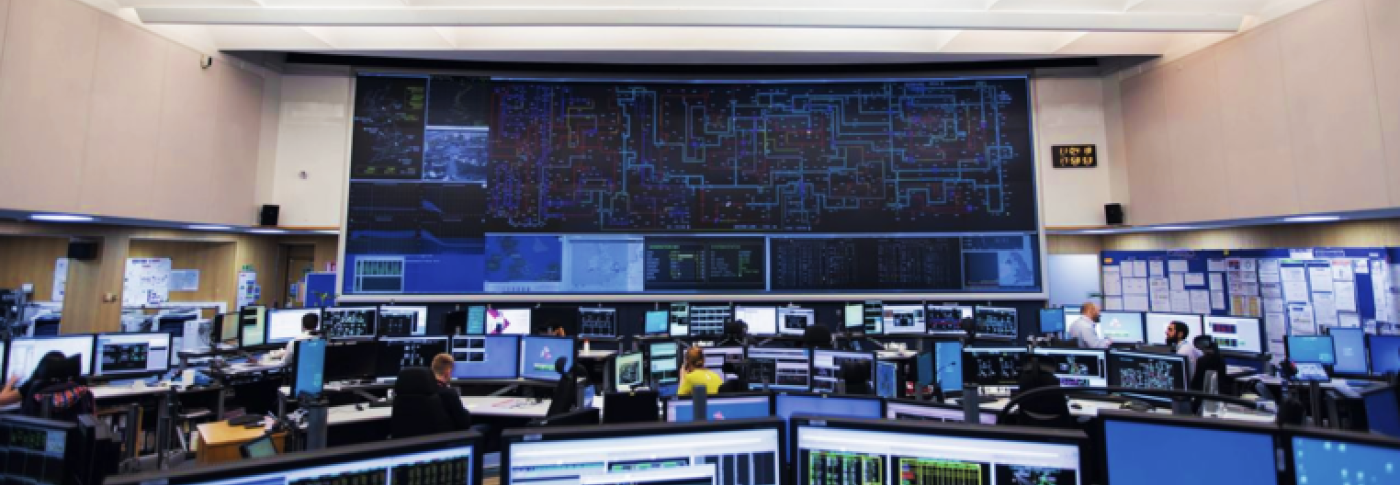
A Christmas Day in the Life of a National Balancing Engineer
15 Dec 2020 - 4 minute read
On Christmas Day, our control room engineers will be working as hard as ever to keeps the fairy lights on and power the oven for that delicious turkey roast.
Bernard Mitchell, National Balancing Engineer tells us what it’s like to work in our control room on Christmas Day in our Day in the Life series Christmas special!
What will you be doing this Christmas Day to keep the lights on for Great Britain?
I’ll be working the afternoon/evening shift from 2pm to 9pm! Because it falls on a Friday, we’ll have the usual weekday three shift pattern – 7am-2pm, 2pm-9pm and then 9pm-7am on Boxing Day.
Next year Christmas Day falls on a Saturday so we’ll be working two 12-hour shifts.
I live in Bristol and I’m a couple of hours drive from our control room in the south of England. I’ll have to set off late morning and will stop on the way to grab some food.
The best thing about Christmas Day working is the lack of traffic!
What’s it like to work in the control room on Christmas Day?
I’ve done a dozen Christmas Days in the control room during my 17 years working at the ESO, so, I’m pretty used to it!
Our control room operates 24/7, 365 days a year. If we’re on the rota for Christmas Day then we stick to that, unless a colleague agrees to swap. For us it’s a standard working day.
I’m happy to work it as we get a lot of flexibility in our jobs which I love.
Personally, I don’t like early mornings! As I mentioned I’m two hours away from the control room so a 7am shift means a 4am start or staying over in a hotel. I was down to work the morning shift this Christmas Day, but I swapped with a colleague.
I don’t have children, so my preference is always to work Christmas Day and then hopefully get New Year’s Eve off. Although I doubt many of us will have plans this NYE!
Due to COVID-19 restrictions, this Christmas Day shift will feel different. In the past, if we’ve been on the evening shift then the Power System Manager has sometimes cooked a Turkey lunch in the control room.
We’re no longer allowed to bring ingredients in and prepare food for our colleagues. This has also put a stop to our Sunday roasts, but we do still enjoy an Indian takeaway on Thursdays and Saturdays!
What does Christmas Day demand look like?
In many ways, Christmas Day is one of our easier shifts.
We do a huge amount of planning for every single minute of the day - weather, cloud, winds, demand etc. We know what to expect.
If you take out all variables the demand will be the same as previous years. It doesn’t matter if Christmas Day is a Sunday or Friday, it tends to be the same.
The morning peak starts at the same time, but it rises faster than a normal weekday. This is because kids all get up early, and many people begin cooking early in the morning. On a standard weekday people will get ready and then leave for work, whereas most stay in on Xmas Day, so the demand continues to rise all morning and then peaks at around 1.30pm.
Once lunch is eaten people relax in front of the TV. It’s the only day of the year where there isn’t an evening peak. The reason for this is that few people cook again in the evening because we’re all so full. And because it’s dark so early, lights come on mid-afternoon and stay on for the rest of the day.
Peak national demand has reduced from just under 60GW in 2007 to 43GW so far this year. That’s a huge drop!
This year, Boxing Day falls on a Saturday so the demand shape will be similar to any other winter Saturday.
However, demand will be lower than a standard weekend due to many businesses still being closed, and a lot of us being out of the house.
Does Christmas TV pick up impact your day?
17 years ago, when I started work at the ESO, most people would watch TV live. We’d often see a 1,000MW pick up when EastEnders finished. These days we only see large TV pick ups from live events.
We still look ahead at which shows may get a lot of views on Christmas Day. Last year 12m of us watched the Gavin & Stacey Christmas special, but at different times of the evening. The pickup will rarely go above 400MW now for a non-sports event or live announcement.
The only on demand TV in the 1980’s and 1990’s was a VHS!
Read more festive facts!
